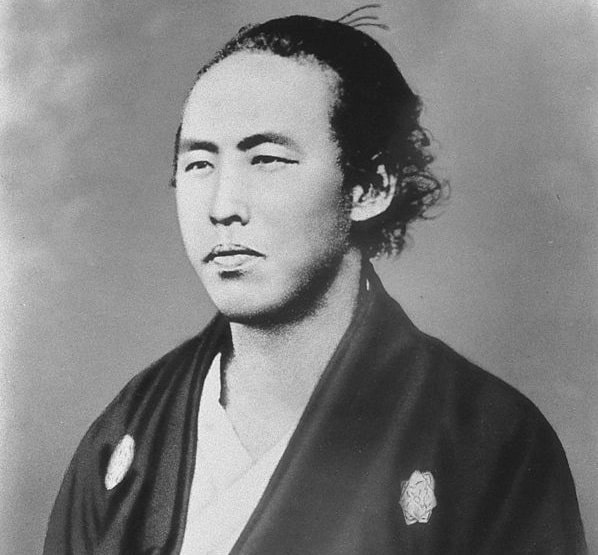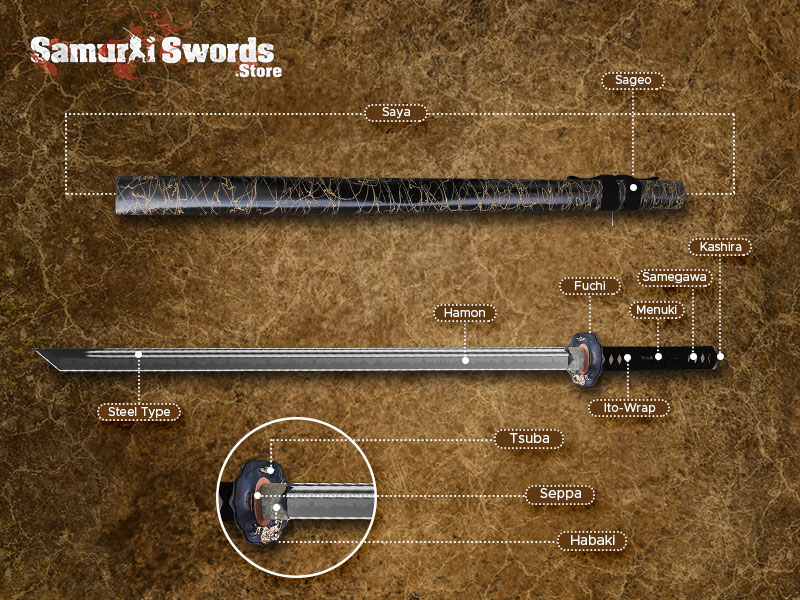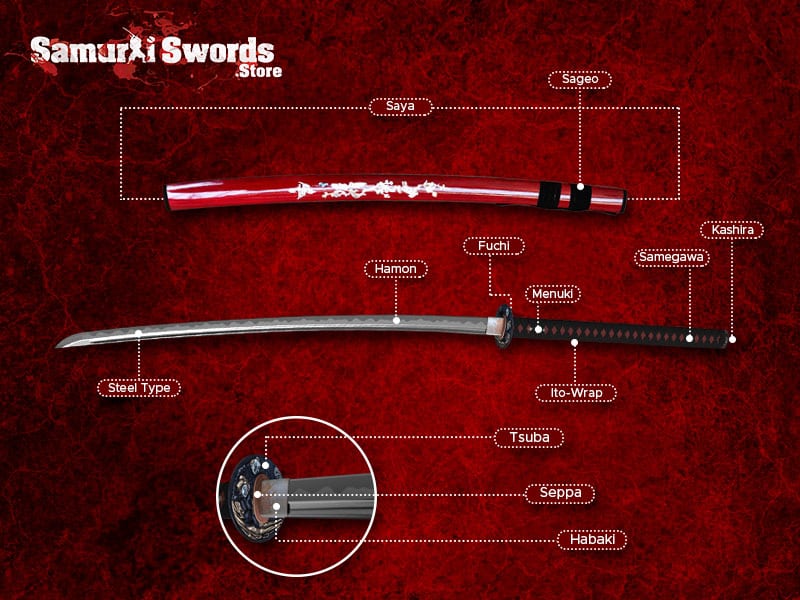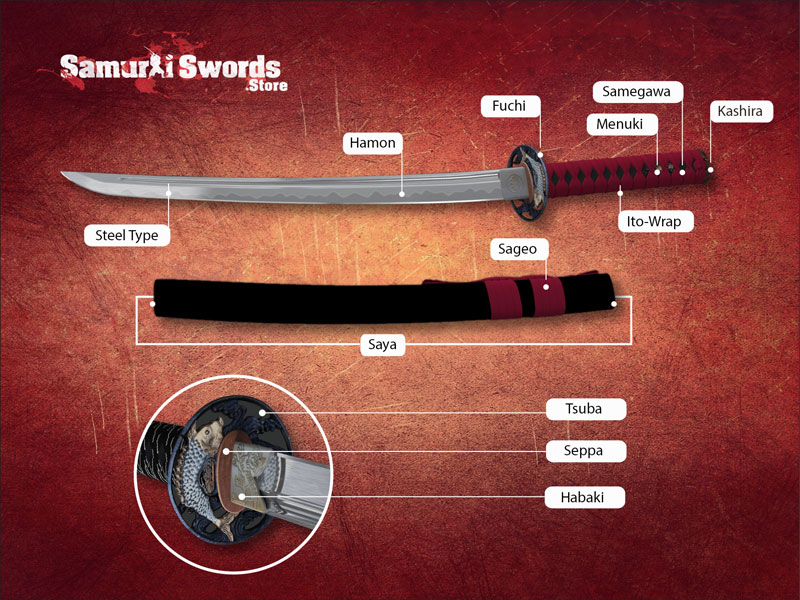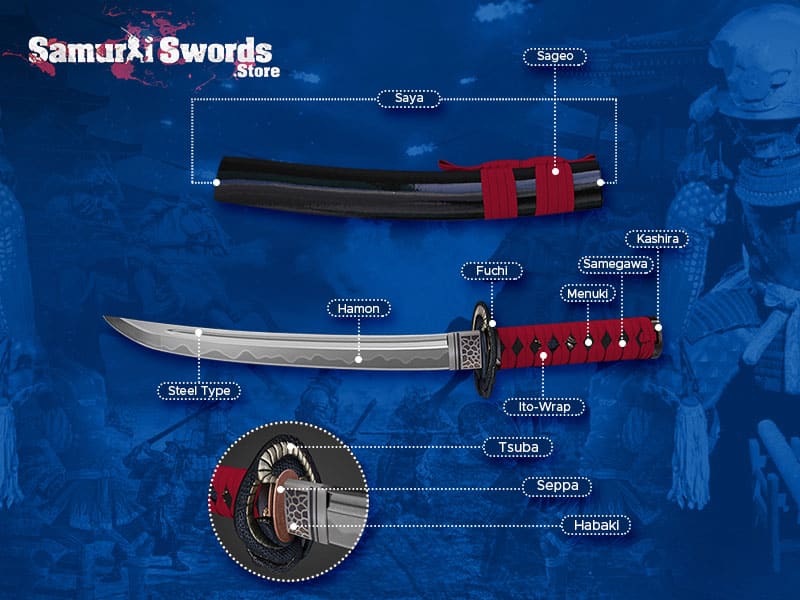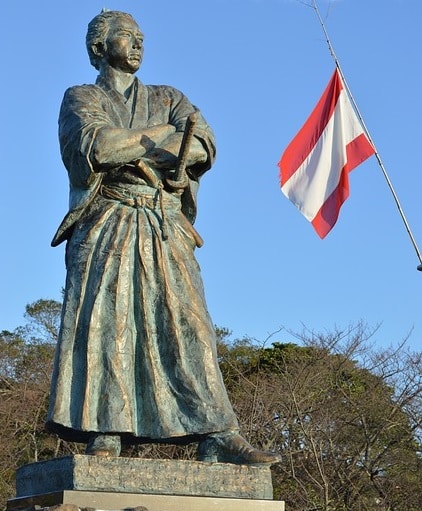Samurai Warriors
Sakamoto Ryoma
Sakamoto Ryoma
A proponent figure spearheading a movement to overthrow the Tokugawa Shogunate rose in Japan in the person of Sakamoto Ryoma.
He was an impelling force to reckon with for most of the period under the Bakumatsu. He was credited for his efforts in peace negotiations between Choshu and Satsuma. These were known as powerful provinces that were hostile towards each other.
Sakamoto Ryoma Early Life
Sakamoto Ryoma was born in 1836. He was the son of a country samurai who lived in the remote province of Tosa (present-day Kochi Prefecture); on the Island of Shikoku.
The previous generation of Sakamoto’s family was able to acquire an adequate amount of wealth. This was done by being sake brewers to be able to buy the rank of Goshi or country samurai.
This was the lowest rank in the hierarchy of samurai. At age twelve, he was enrolled in a private school yet was short-lived since he had no real penchant for studies.
Sakamoto Ryoma Living in Tosa
As a domain, Tosa had a strict rule that everyone closely adhered to. There was a separation for those belonging to the higher ranks and those who were of low-ranked samurai.
Those that belonged to the privileged higher class received special treatments such as the area where they lived. Even during the time of Sakamoto Ryoma’s life as a third-generation Sakamoto clan member, they still remained as low-ranking samurai.
Polishing Swordsmanship Skills
When he was 14 years old, he was bullied in school, so Sakamoto Ryoma’s older sister enrolled him in fencing classes to teach him how to defend himself. By the time he was an adult, he was a master swordsman.
He was then allowed by his clan to further his studies as a swordsman in Edo. Sakamoto was able to enroll in a famous school, the Hokushin Itto-Ryu Hyoho Chiba Dojo.
In this school, he was given a certificate symbolized by a scroll declaring his sword mastery. He was promoted to the position of Shihan where he could teach Kenjutsu to his students.
While he was teaching, he befriended Chiba Jutaro Kazutane. That same year, the United States arrived with a fleet of ships to force Japan out of its isolation. These black ships were commandeered by Matthew C. Perry; Commodore.
Sakamoto Ryoma Involvement in Politics
After completing his studies, Sakamoto returned to Tosa. It was his friend Takechi Hanpeita who thought of a Tosa-Loyalist party. With that, they had a political slogan which was said to be “Revere the Emperor and Expel the Barbarians”.
This organization was composed of 2000 Samurai which was mostly from those of low ranking positions. These Samurai supported to reform the Tosa government.
Since those who ruled in Tosa refused to recognize this group, they plotted to assassinate Yoshida Toyo which was after Ryoma left the group.
He decided to leave Tosa, separating from his friend Takechi. During those times, no one was allowed to leave the clan without asking for permission.
One of his sisters committed suicide due to him leaving. With that, he utilized the alias Saitani Umetaro since he worked and functioned against the shogun.
Sakamoto Ryoma’s Rise to Power
Sakamoto Ryoma belonged to a low-ranking samurai family. He establishes his reputation through his swordsmanship skills. He was known by his alias name Saitani Umetaro and was constantly hunted down by the Bakufu supporters like the Shinsengumi.
He became a ronin and plotted to assassinate Katsu Kaishu, who was a high ranking official in the Tokugawa Shogunate back then.
Ryoma’s attempts were foiled since he was convinced by Katsu Kaishu that there was a need to initiate a long term plan to increase Japan’s military strength.
Since the tables were turned, Sakamoto, instead, worked side by side with him as his assistant, while the other was his mentor.
Modern Naval Force
Sakamoto Ryoma was considered as the “father of the Imperial Japanese Navy”. He was working closely under the guidance of Katsu Kaishu’s direction as a modern naval force of the Tokugawa Shogunate.
Katsu recognized the abilities that Ryoma had and was able to establish the country’s navy with his help. Katsu has received permission from the Shogunate to establish Kobe Naval Training Center.
He made Ryoma the head of this academy that taught young officers on how to be efficient men of the seas. It was Sakamoto Ryoma who was the founder of the private navy and trading company in Nagasaki City.
He was aided by the Satsuma for this endeavor. He named this company Kameyama Shachu. Later on, this company changed its name to Ocean Support Fleet or Kaientai.
Bakufu
Sakamoto Ryoma was active against the Bakumatsu. This form of the military government was better known by its abbreviated form bakufu. This refers to the final years of the Edo period where Japan’s isolation policy towards foreigners or sakoku ended.
Sakamoto Ryoma was there when the Tokugawa Shogunate evolved into the pre-modern empire of the Meiji government. Even if Sakamoto Ryoma’s group was one of the main players of the Bakumatsu chaos, others seized this opportunity for personal gain.
Achievements of Sakamoto Ryoma
Sakamoto Ryoma was somebody who believes in democratic principles. He was able to study in the United States Congress and the British Parliament as a model to govern Japan after the Meiji Restoration.
Listed are some of Sakamoto’s achievements which include:
- Wrote the Eight Proposals While Shipboard. He put an emphasis on a democratic type of bicameral legislature
- Wrote and proposed a Constitution
- Responsible for National Army and Navy formation
- Proposed the regulation of gold and silver exchange rates
- His proposals were the basis of the subsequent parliamentary system. However, this was implemented after Sakamoto Ryoma died
Sakamoto Ryoma’s Popularity in Modern Culture
When a 2008 survey was made on the short life of Sakamoto Ryoma, he managed to capture the hearts of the Japanese people of the past and the present.
In the said NHK Broadcasting Culture Research survey, he occupied the third position behind such prominent figures like Oda Nobunaga and Tokugawa Ieyasu.
He was somebody who was known to work behind the scenes, but, his efforts to modernize Japan endeared him to the people. He remained in the center of the movement, overthrowing the Tokugawa Shogunate.
Sakamoto Ryoma’s End of Life
After being hunted by Bakufu followers, he was ultimately cornered and murdered during the Boshin war. He was with his companion Nakaoka Shintaro staying at a Kyoto inn when he was murdered.
He was assassinated when he was just 31 years old. This took place before the Meiji Restoration took effect, and was known as Omiya incident.
Leaving Behind a Legacy
Sakamoto Ryoma was a visionary ahead of his time. In his mind, he saw an image of an independent country. He was a man inspired by the United States’ concept that all men were equal.
He was also an advanced thinker in the sense that he realized that in order for the country to become globally competitive, it needed to be industrialized and technologically-forward.
Sakamoto Ryoma In Memoriam
Sakamoto Ryoma inspires a romanticized character in modern Japan. The Kochi Airport was even named after him though it is better known as Kochi Ryoma Airport.
There also exist other elements to honor him such as the Sakamoto Ryoma Memorial Museum. In this museum, there stands a bronze statue of him overlooking the sea.
The city of Kochi also has other attractions that have his name on it. Downtown Kochi has Sakamoto Ryoma Hometown Museum that shares insights into how he was during his childhood.
In 2009, The Hokkaido Sakamoto Ryoma Memorial Museum was established in Hakodate, Hokkaido. He was even honored by having an asteroid specifically named after him: Asteroid Ryoma.
His wife was equally given the honor by having another asteroid named after her: Asteroid 5823.
Image Source: See page for author [Public domain]


